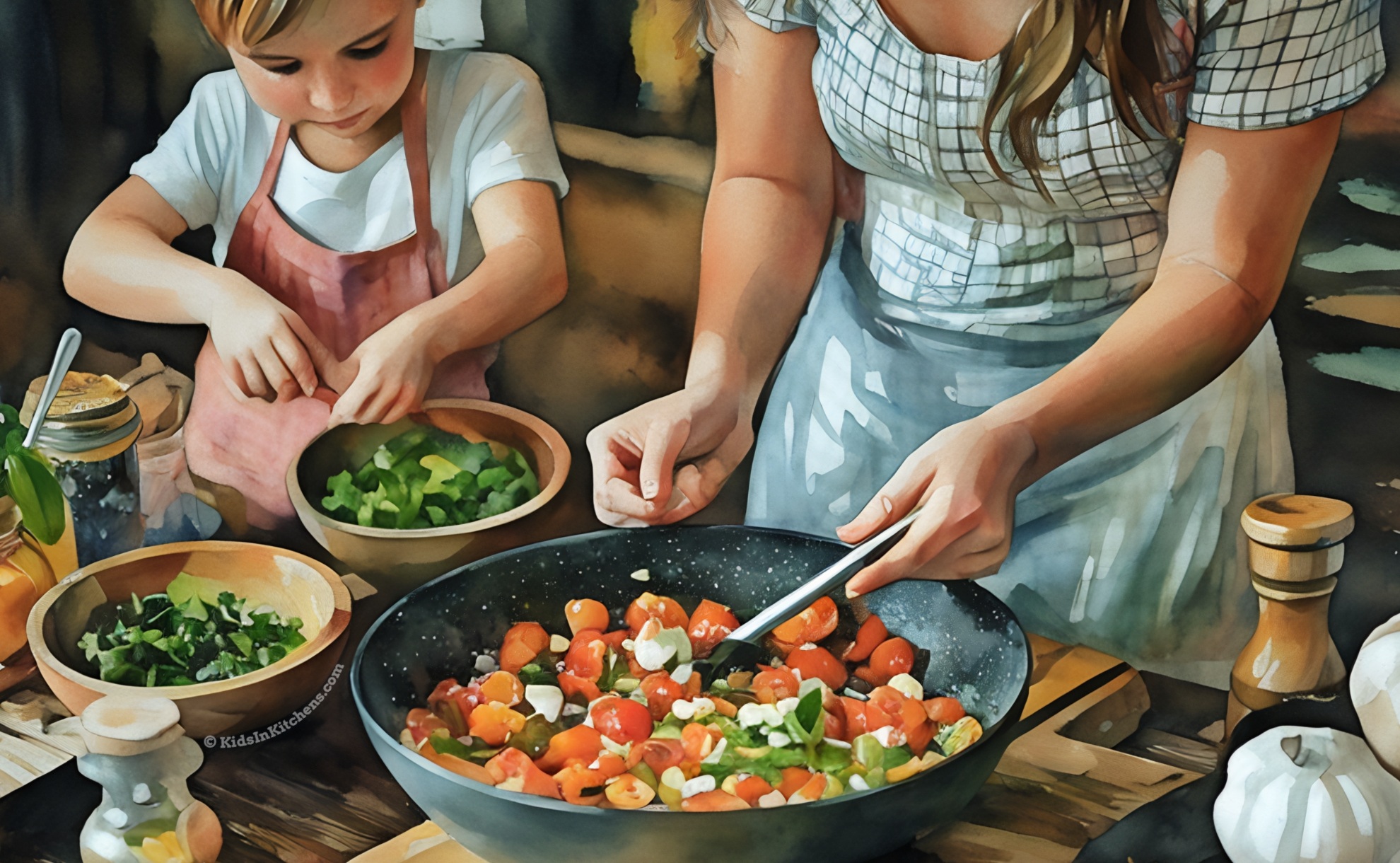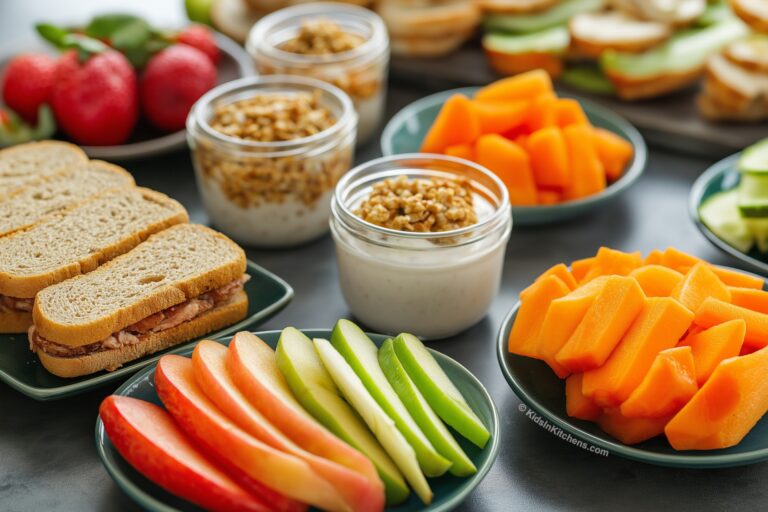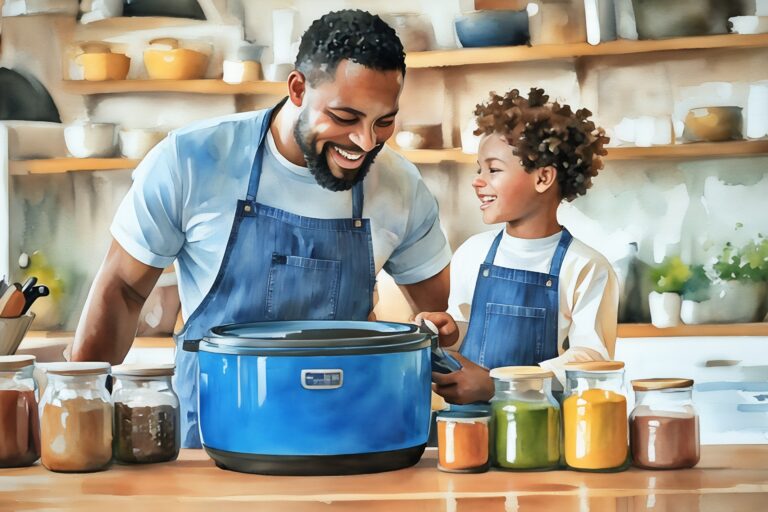Age-Appropriate Cooking Tasks for Kids: What Your Child Can Do at Each Stage
Cooking with kids is a wonderful way to teach them essential life skills, boost their confidence, and spend quality time together. But knowing which tasks are safe and appropriate for their age is key to making it a positive experience. Here’s a handy guide to help you figure out what your child can do in the kitchen, from ages 5 to 13.
“These age-group breakdowns are simply a general guide—every child develops at their own pace, and you know your child best. If your 5-year-old is ready for something in the next age group, go ahead! Likewise, some children may need a bit more time to master certain skills, and that’s okay too.” ~ Kids In Kitchens
Ages 5-7: Getting Started
At this age, kids are excited to be part of what’s happening in the kitchen. They’re eager to help, but they still need plenty of supervision and guidance. Focus on simple, hands-on tasks that are safe and fun.
What They Can Do:
- Washing Produce: Give them a stool to stand on and let them rinse fruits and veggies under cool water. It’s a great way to start learning about different types of produce and proper food hygiene.
- Mixing and Stirring: Whether it’s stirring batter, mixing a salad, or tossing fruit with yogurt, they’ll love using a big spoon to help blend things together. Make sure they’re using a large, sturdy bowl to avoid spills.
- Spreading and Sprinkling: Spreading peanut butter on toast or sprinkling cheese on a pizza can make them feel like they’re creating their own masterpiece.
- Using Cookie Cutters: This is a great way to let them have fun with shapes. Let them cut out cookie dough or even use cutters on sandwiches to make lunch more exciting.
Safety Tips:
- Always supervise closely. Their coordination is still developing, so spills and accidents are common.
- Keep them away from sharp objects and hot surfaces. Using child-safe utensils can help build their confidence without risk.
Pro Tip: Keep tasks short and engaging to match their attention span. Celebrate their efforts, even if the result isn’t perfect!
Ages 8-10: Building Confidence
Kids in this age group are becoming more independent and curious about the “why” behind cooking steps. They’re ready to take on more responsibility and can handle multi-step instructions with a little guidance.
What They Can Do:
- Measuring Ingredients: Teach them how to use measuring cups and spoons. They’ll feel like real chefs as they measure out flour, sugar, or spices for a recipe.
- Using a Peeler: Under supervision, they can peel carrots, potatoes, and other vegetables. It’s a big step up in responsibility and motor skills.
- Making Simple Dishes: Assembling sandwiches, making salads, or even rolling up wraps are tasks they can manage mostly on their own.
- Cracking Eggs: Cracking eggs into a separate bowl to check for shells before adding them to a recipe is a good practice. It’s a bit tricky but great for building coordination.
- Setting the Table: While not cooking, setting the table is an important part of meal prep and helps them feel involved.
Safety Tips:
- Supervise when they’re using a peeler or any tool that has sharp edges.
- Teach them to clean up as they go to prevent slips and spills.
Pro Tip: Encourage them to ask questions about the recipe and ingredients. It’s a great way to turn cooking into a learning experience!
Ages 11-13: Growing Independence
As tweens and young teens, kids are ready to tackle more complex tasks. They can start using more advanced techniques and handling tools with proper supervision. This is the age where their creativity in the kitchen really starts to flourish.
What They Can Do:
- Using a Knife: Teach them proper knife skills with a small, sharp knife. Start with softer items like herbs before moving on to harder veggies.
- Stovetop Cooking: Under close supervision, they can start using the stovetop for tasks like sautéing vegetables or making scrambled eggs.
- Baking Simple Recipes: With guidance, they can bake cookies, muffins, or a simple cake. It’s a good way to introduce them to the basics of baking.
- Boiling Pasta or Rice: Show them how to safely boil water and cook simple staples like pasta or rice. Supervise closely, especially when dealing with boiling water.
- Making Complete Simple Meals: They can start following recipes to make simple meals, like a basic stir-fry, grilled cheese with tomato soup, or a one-pot dish.
Safety Tips:
- Reinforce the importance of using oven mitts, knife safety, and never leaving the stovetop unattended.
- Always have an adult present when they are using heat or sharp tools.
Pro Tip: Encourage them to experiment with flavors and presentation. Let them plan and prepare a simple family meal—it’s a great confidence booster!
General Safety Guidelines for All Ages
- Emphasize Cleanliness: Always wash hands before and after handling food. Teach them to clean up as they go.
- Proper Food Handling: Explain the importance of keeping raw meat or seafood separate from other foods and always using clean utensils and surfaces.
- Supervise, Supervise, Supervise: Even the most capable young cooks need a watchful eye to stay safe, especially around heat and sharp tools.
Cooking with your kids is more than just making food—it’s about teaching them valuable life skills and creating lasting memories together. By introducing age-appropriate tasks and gradually increasing their responsibilities, you’re setting them up for a lifetime of confidence and independence in the kitchen. Ready to get started? Choose a few tasks suitable for your child’s age and enjoy the culinary adventure together!





